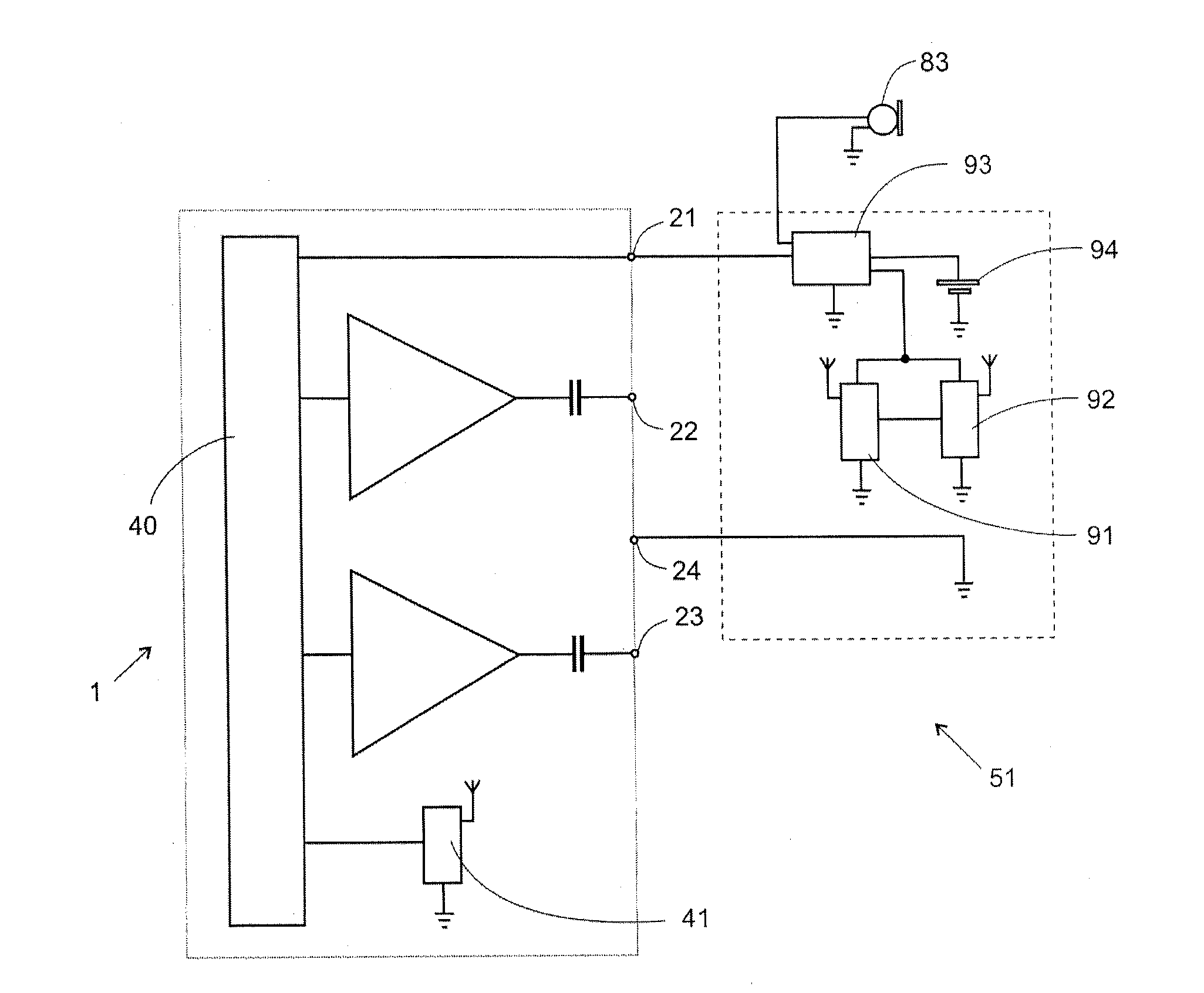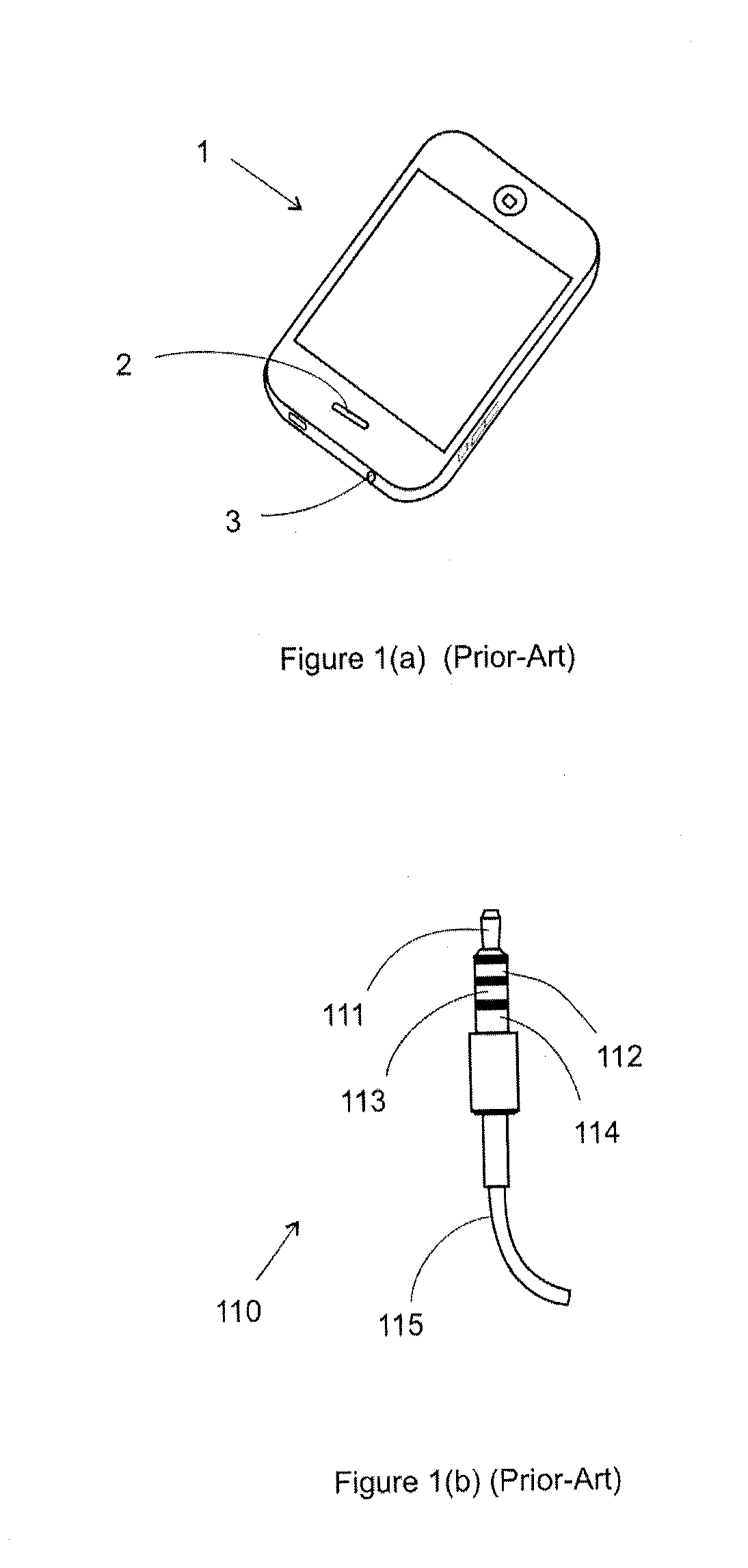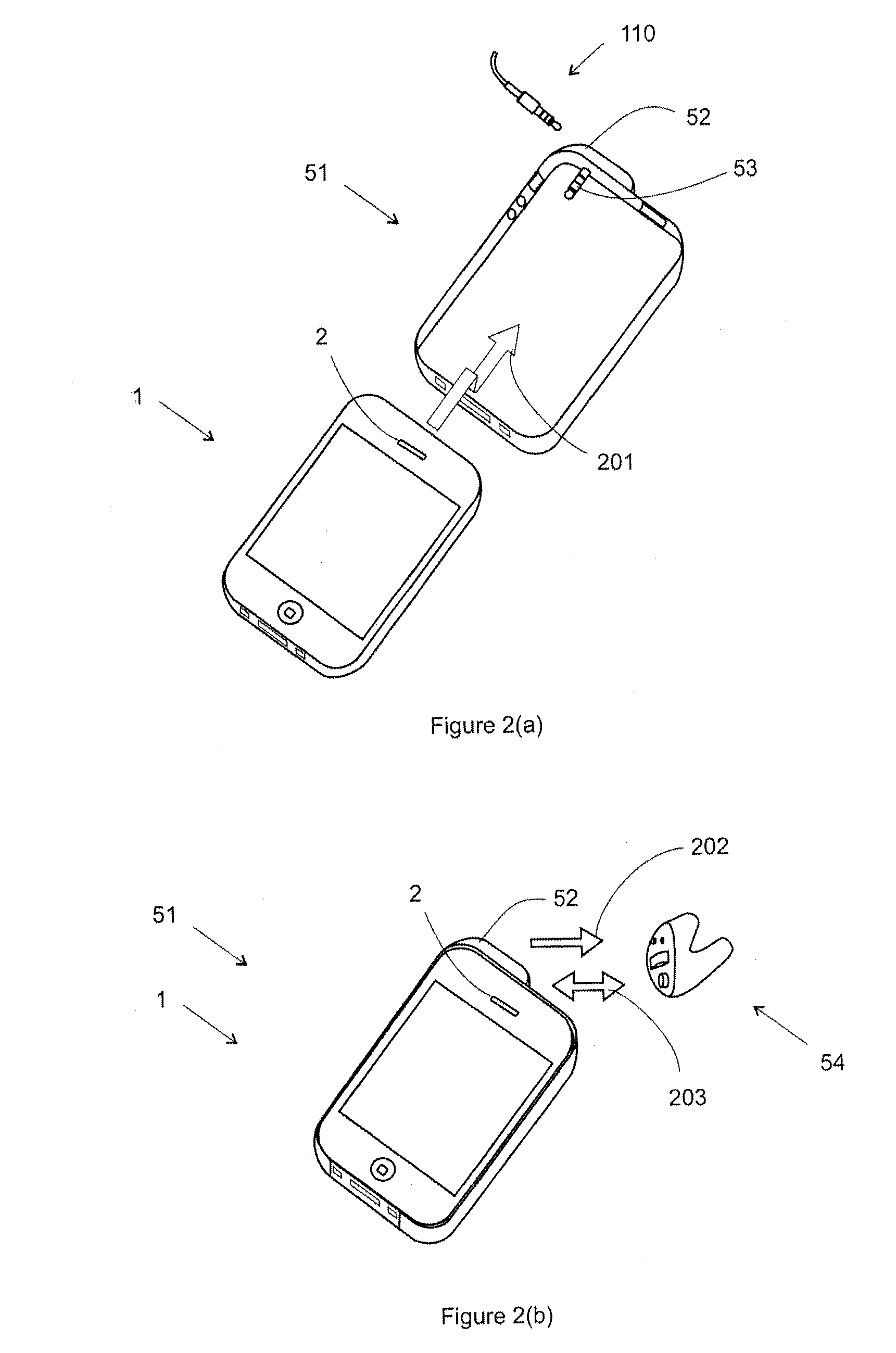Communications apparatus
a technology of communication apparatus and equipment, applied in the field of communication equipment, can solve the problems of no reported easy method in terms of hardware or convenience to estimate (or compute) the loudness and duration of music, user of electronic devices may suffer from noise-induced deafness, no easy method in terms of convenience and hardware, etc., and achieve the effect of small form factor and not easily broken
- Summary
- Abstract
- Description
- Claims
- Application Information
AI Technical Summary
Benefits of technology
Problems solved by technology
Method used
Image
Examples
first embodiment
[0045]It is apparent that there are several unique advantages of the first embodiment and first preferred embodiment of the present invention, including no external power required for Comms Apparatus 51, the extreme simplicity of electronics in the Comms Apparatus 51 and its ensuing very small form factor. These uniqueness would provide a highly practical and commercially acceptable noise dosimeter.
[0046]FIG. 3(c) depicts the further preferred first embodiment of the invention where power is now harvested from Microphone Input 21. Comms Apparatus 51 comprises Power Management 63 and Electronics 64. As before, the input to Loudspeaker 81 and Loudspeaker 82 are respectively Left Channel Output 22 and Right Channel Output 23 of Mobile Phone 1. Electronics 64 derives its power from Microphone Input 21 via Power Management 63. Depending on the power requirements of the electronics in Electronics 64, Power Management 63 may be as simple as not requiring any electronics, a capacitor or as ...
second embodiment
[0056]FIG. 4(a) depicts the invention where an application is short-range simplex communications between first electronic device Mobile Phone 1 and second electronic device via Comms Apparatus 51. In FIG. 2(b), the second electronic device is Hearing Aid 54, and in other applications, the second electronic device may be a pacemaker, etc. In one example application, first electronic device Mobile Phone 1 may be able to transmit data to second electronic device, including for simplex communication, for control, audio data communication, etc, via Comms Apparatus 51.
[0057]In FIG. 4(a), Comms Apparatus 51 comprises Transmitter 71 whose input is Left Channel Output 22 of first electronic device Mobile Phone 1. Transmitter 71 is a passive transmitter, thereby not requiring power, for example a telecoil (also known as T-coil) where the modality of transmission is magnetic induction; also known as loop system. In this application, second electronic device (e.g. Hearing Aid 54 in FIG. 2(b)) w...
third embodiment
[0076]Further, if Mobile Phone 1 is internet enabled, a third electronic device at the other end of the internet can now communicate (full-duplex) with the second electronic device. Consider the use of this third embodiment of the invention for a revolutionary hearing aid application (and other like applications) where the third electronic device at the far end of the internet connection is a hearing aid diagnostic system, first electronic Mobile Phone 1 is at the near end of the internet, and Hearing Aid 54 being the second electronic device. Mobile Phone 1 and Comms Apparatus 51 are now collectively the intermediary communications devices between the second electronic device (e.g. Hearing Aid 54) and the third electronic device (hearing aid diagnostic system). The manufacturer of a hearing aid by means of the hearing aid diagnostic system may now remotely diagnose (and / or program, collect data, etc.) the hearing aid.
[0077]The overall communications system is as follows. Third elec...
PUM
 Login to View More
Login to View More Abstract
Description
Claims
Application Information
 Login to View More
Login to View More - R&D
- Intellectual Property
- Life Sciences
- Materials
- Tech Scout
- Unparalleled Data Quality
- Higher Quality Content
- 60% Fewer Hallucinations
Browse by: Latest US Patents, China's latest patents, Technical Efficacy Thesaurus, Application Domain, Technology Topic, Popular Technical Reports.
© 2025 PatSnap. All rights reserved.Legal|Privacy policy|Modern Slavery Act Transparency Statement|Sitemap|About US| Contact US: help@patsnap.com



